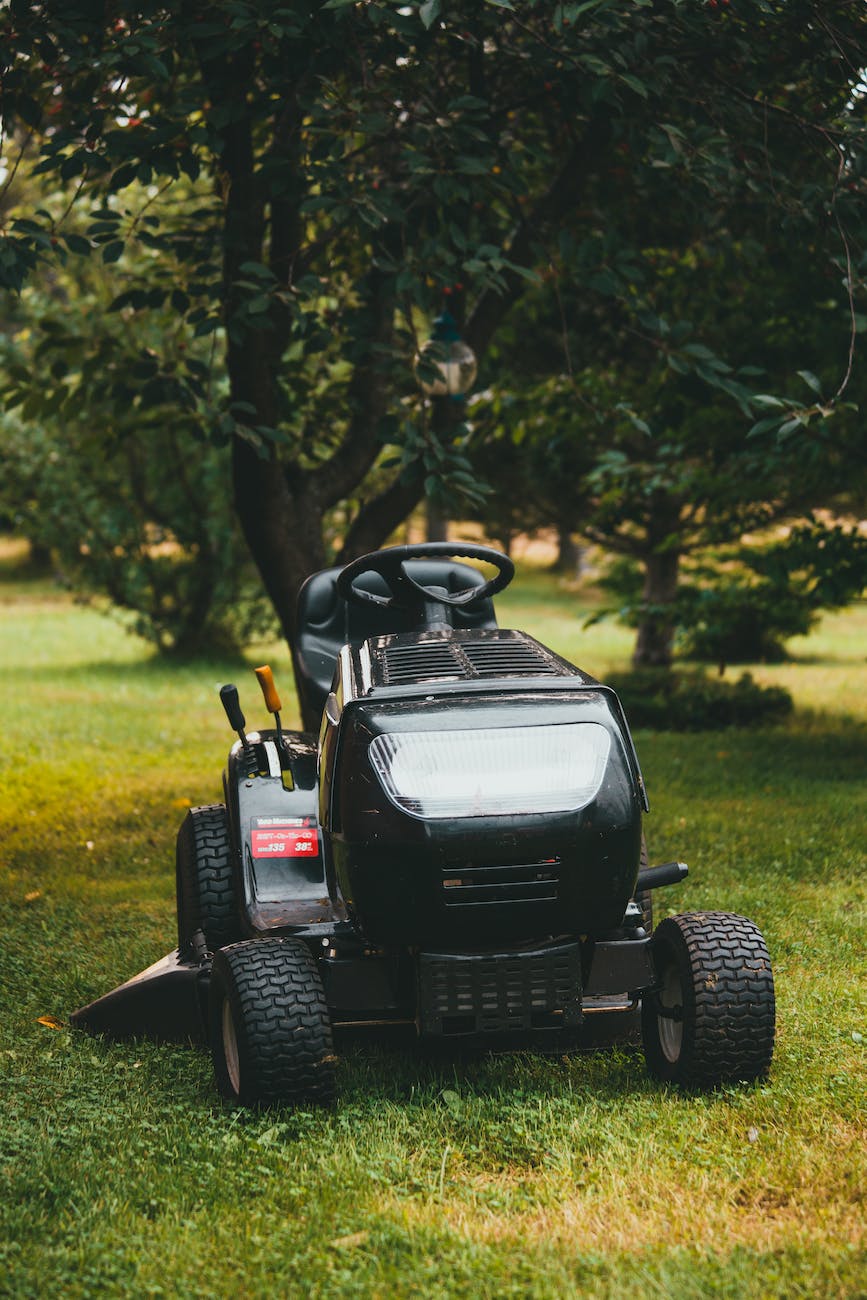Want to find out how to test riding lawn mower solenoid? Luckily, this is a super simple diagnostic test. Yay!
How Does a Solenoid Work?
It’s important to know how to test a riding lawn mower solenoid if your machine doesn’t start. The solenoid provides power to the starter when the system is completed via the key switch.
A small signal wire from the key switch runs to a terminal on the solenoid. When the key is turned, 12 volts runs to the solenoid.
The solenoid itself is either grounded through the mounting bolts and to the frame of the machine, or it has a dedicated grounding wire.
You can tell what type you have by the number of terminals on it. If there are three, then it grounds through the mounting bolts. If there are four, then it grounds via its own wire.
Once power comes to the solenoid, an electromagnet causes a metal plate to jump and bridge the two remaining terminals. One of these terminals has power coming in from the battery directly, and the other terminal has a cable running to the starter.
So, when the plate jumps up, the 12 volts from the battery connects to the starter, allowing it to run.
Tools Needed (Commissions Earned)
How to Test Riding Lawn Mower Solenoid
Now that we know how a solenoid works, how do we test it?
Testing for Voltage
Place the negative cable from your jumper pack onto the ground of the solenoid. Again, this is either the grounding terminal or the mounting bracket itself depending on your type.
When you tap the positive cable from your jumper pack to the key switch terminal of the solenoid, you will hear an audible click if it is working correctly.
I say tap because you don’t want to leave voltage to the solenoid for very long. It will heat up quickly, and you can actually burn them out. The good news is that the click is pretty much instantaneous, so you should hear it right away.
If you don’t hear a click, and you’re certain that all of your connections are good, then you know the solenoid is bad and you should replace it.
Let’s assume that it does click, and we can move on to the second part of the test.
Testing for Continuity
Chances are, if you hear the click then the solenoid is probably working. But to be sure, we can do a quick continuity test.
It’s helpful if you have four hands to do this test, but two will suffice.
Start this test by setting it up in the previous manner, but have your multimeter ready and set to continuity.
With the negative cable from your jumper pack on the ground of the solenoid, attach the positive cable like you did previously to the key switch input.
Then, connect one lead from the multimeter to one of the main posts and the other lead to the remaining post.
Because the solenoid has power, and we heard it click, we know that the plate jumped up. In theory, there should be continuity across the two poles.
If the multimeter confirms continuity, then you know that the solenoid is good. There’s a chance that the solenoid could click and receive power but not have continuity across the poles, so we want to confirm.
Again, you want to be relatively quick with this test and not leave power hooked up to the solenoid for too long.
Recap
There you have it; a super easy way how to test riding lawn mower solenoid. If the solenoid tests confirm that it’s good and you still can’t get the starter motor to fire, then isolate the starter and inspect that. Additionally, ensure that you have a good, clean ground.
For those of you who prefer a good video, here’s a great explanation.
As an Amazon Associate I earn from qualifying purchases.
